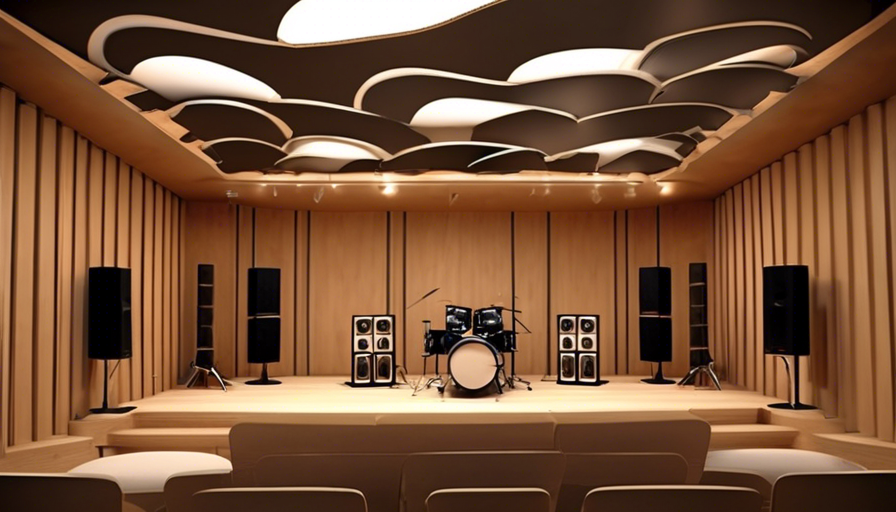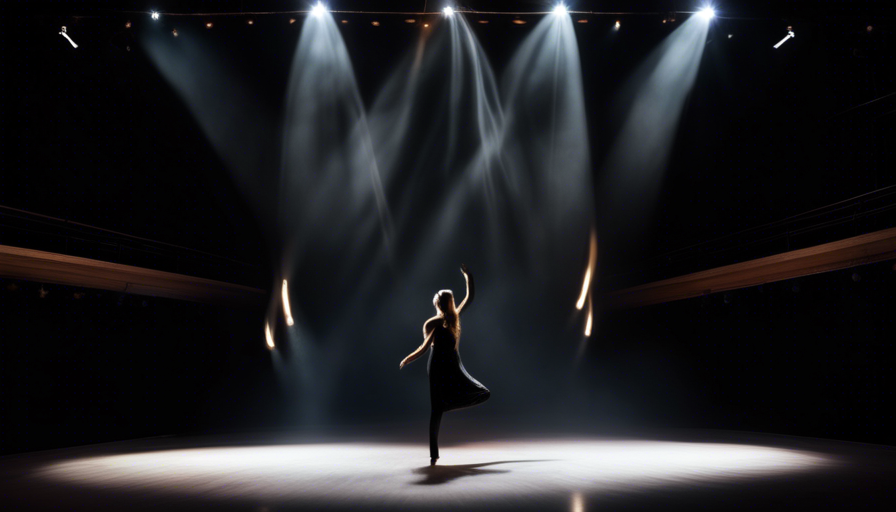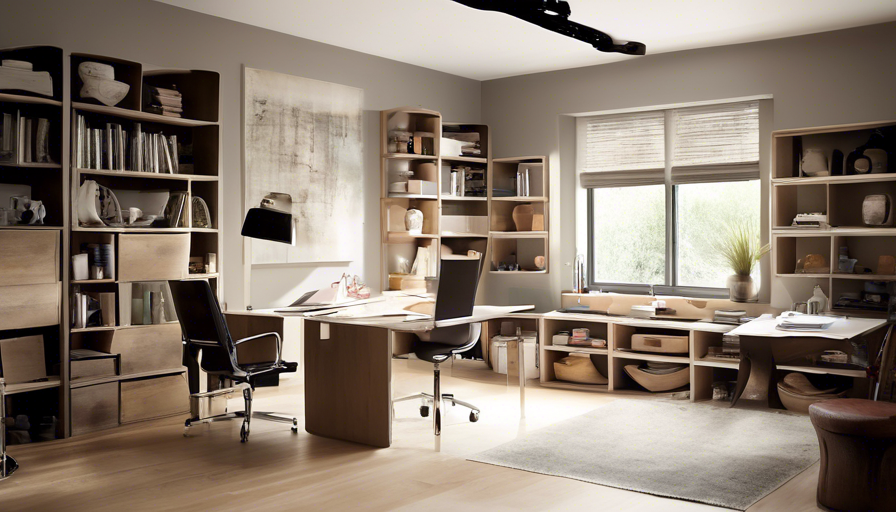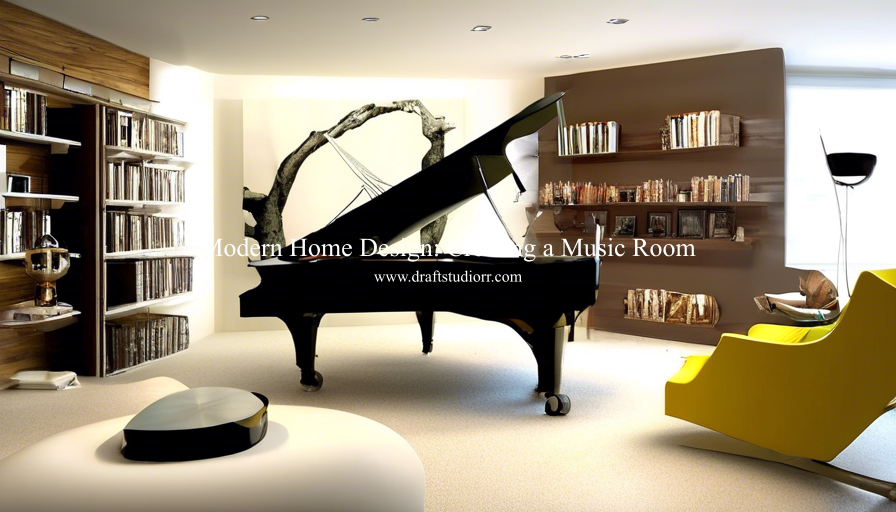Modern Home Design: Creating a Music Room
Welcome to Draft Studio's guide on designing the perfect music room for your modern home. Whether you're a seasoned musician or just starting your musical journey, having a dedicated space to create, practice, and enjoy music is a valuable addition to any home. This article will guide you through the essential considerations for designing a modern and functional music room that reflects your style and musical needs.
1. Defining Your Music Room Purpose
Before diving into the design process, it's crucial to define the primary purpose of your music room. Are you primarily focused on:
- Practice and Performance: Do you need a space for solo practice, band rehearsals, or even small performances?
- Recording and Production: Are you looking to set up a home recording studio?
- Listening and Relaxation: Do you envision a room for enjoying music with high-quality audio equipment?
- Multi-Purpose Use: Would you like a space that can accommodate a variety of musical activities?
Defining your primary purpose will help you determine the layout, acoustic treatments, and equipment necessary for your music room.
2. Choosing the Right Space
The size and location of your music room will significantly impact its functionality and design. Here are some considerations:
- Dedicated Space: If possible, choose a dedicated space that won't be interrupted by household noise or traffic.
- Room Size: A larger room allows for greater flexibility in layout and equipment placement. Consider the size of your instruments and the number of people you anticipate using the room.
- Noise Control: If your chosen space is adjacent to bedrooms or other living areas, consider the potential noise impact and incorporate soundproofing measures.
- Natural Light: Natural light can be beneficial for a music room, but be mindful of glare on screens or instrument surfaces. Consider installing blackout curtains or blinds if necessary.
3. Modern Aesthetics and Design Elements
A modern music room blends contemporary design with functionality, creating a visually appealing and inspiring space. Here are some key elements to consider:
- Minimalist Design: Embrace clean lines, open spaces, and a neutral color palette.
- Industrial Chic: Incorporate exposed brick walls, metal accents, and vintage lighting fixtures for a raw and edgy look.
- Natural Materials: Wood, stone, and leather add warmth and texture, complementing the minimalist approach.
- Strategic Lighting: Use a combination of ambient, task, and accent lighting to create different moods and highlight key features.
- Smart Technology Integration: Consider incorporating smart lighting, speakers, and climate control systems for enhanced functionality and convenience.
4. Acoustic Treatment: Creating the Perfect Sound

Achieving optimal acoustics is essential for a music room. Here's how to ensure the best sound quality:
- Sound Absorption: Use sound-absorbing materials like acoustic panels, foam tiles, or carpets to minimize reverberation and echoes.
- Sound Diffusion: Install diffusers to scatter sound waves and prevent standing waves that can distort sound.
- Bass Traps: Address low-frequency issues with bass traps, placed in corners and along walls to absorb bass energy.
- Room Shape: A rectangular room with a slightly uneven ceiling can help minimize standing waves.
- Professional Consultation: For complex acoustic challenges or critical listening environments, consult an acoustics professional to design a tailored solution.
5. Essential Equipment and Furniture
The equipment and furniture you choose will shape the functionality and aesthetic of your music room. Consider:
- Instruments and Amplification: Select equipment that meets your musical needs, from acoustic instruments to electronic keyboards and amplifiers.
- Audio System: Invest in high-quality speakers, a receiver or amplifier, and a turntable if vinyl is your passion.
- Recording Equipment: If you plan on recording music, consider microphones, audio interfaces, and software.
- Storage and Organization: Plan for adequate storage for instruments, sheet music, accessories, and oth
 er equipment.
er equipment. - Comfortable Seating: Choose comfortable chairs or a sofa for relaxing and listening to music.
6. Lighting for Inspiration and Performance
Lighting plays a crucial role in creating the right atmosphere for your music room.
- Natural Light: Maximize natural light during the day for a bright and inviting space.
- Ambient Lighting: Use dimmable overhead lighting to create a relaxing and inviting atmosphere.
- Task Lighting: Install focused lighting for instrument playing, reading sheet music, or working on recording equipment.
- Accent Lighting: Highlight specific features or artworks with spotlights or LED strips to add visual interest and depth.
7. Personal Touches and Inspiration
A music room is a reflection of your personal style and passion. Add personal touches that inspire your creativity:
- Artwork: Display artwork that resonates with your musical interests, from album covers to abstract paintings.
- Musical Instruments: Showcase your favorite instruments, whether they are played or simply admired for their beauty.
- Music Books and Magazines: Create a curated library of music books, sheet music, and magazines.
- Plants: Incorporate plants to bring life and freshness to the sp
 ace.
ace. - Inspirational Quotes: Display quotes from your favorite musicians or song lyrics that motivate you.
8. Maintaining a Creative and Functional Space
Once your music room is designed and equipped, keep these tips in mind to maintain its functionality and inspiring atmosphere:
- Regular Cleaning: Keep the space clean and organized to create a positive and efficient environment.
- Cable Man
 agement: Tidy up cords and cables to avoid clutter and safety hazards.
agement: Tidy up cords and cables to avoid clutter and safety hazards. - Equipment Maintenance: Regularly service your instruments and audio equipment to ensure optimal performance.
- Ventilation: Ensure proper ventilation to prevent moisture buildup, especially if you're using electronic equipment.
- Inspiration Corner: Dedicate a small area for displaying creative inspirations, such as sketches, songwriting ideas, or musical quotes.
9. Conclusion: Your Music Oasis
A well-designed music room can be more than just a space for practice or recording; it can be a sanctuary where you express your creativity, nurture your musical passions, and connect with your inner artist. With careful planning and attention to detail, you can create a modern and inspiring music room that enriches your life and inspires your musical journey.


